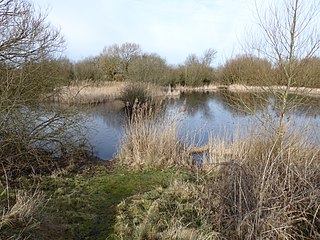The West Midland Bird Club is the UK's largest regional ornithological society. It has been serving birdwatchers and ornithologists in the four English counties of Staffordshire, Warwickshire, Worcestershire and the Metropolitan West Midlands, with lectures, field trips, research, a bulletin and an annual report, since 1929. It is a registered charity in England and Wales, number 213311.
The Avon Wildlife Trust aims to protect and promote wildlife in the area of the former county of Avon – now Bath and North East Somerset, Bristol, North Somerset and South Gloucestershire, in England. It has its headquarters in Bristol and runs wildlife centres at Folly Farm, Somerset and Grow Wilder, Frenchay, North Bristol.

Northumberland Wildlife Trust was established in 1971 to help conserve and protect the wildlife of Northumberland, Newcastle upon Tyne and North Tyneside in the UK. The Trust is a charity, and a member of The Wildlife Trusts partnership.
Rubicon Foundation, Inc. is a non-profit organization devoted to contributing to the interdependent dynamic between research, exploration, science and education. The foundation, started in 2002, is located in Durham, North Carolina and is primarily supported by donations and grants. Funding has included the Office of Naval Research from 2008 to 2010. Gibson, Dunn & Crutcher has provided pro bono services to assist in copyright searches and support.

The Nature Conservation Foundation is a non-governmental wildlife conservation and research organisation based in Mysore, India. They promote the use of science for wildlife conservation in India.

The Triple-A National Championship Game is a single interleague postseason baseball game between the league champions of the two affiliated Triple-A leagues of Minor League Baseball (MiLB)—the International League (IL) and Pacific Coast League (PCL)—to determine an overall champion of the classification. With the exceptions of 2020 and 2021, the game has been held at the end of each season since 2006.

Prestwick Carr is a large area of low-lying wetland on the northern boundary of the city of Newcastle upon Tyne in northeastern England between Dinnington and Ponteland. It is known for attracting various birds of wetlands and open country and is an Site of Special Scientific Interest and a nature reserve managed by the Northumberland Wildlife Trust. A large part of the site is owned by the Ministry of Defence.

St Nicholas Hospital is an NHS psychiatric hospital located in Gosforth, Newcastle upon Tyne, England, UK. The entrance is located on Jubilee Road. The buildings range from Victorian-era to modern facilities and occupy 12 hectares of land. The hospital is managed by Cumbria, Northumberland, Tyne and Wear NHS Foundation Trust.
Protected areas of Sri Lanka are administrated by Department of Forest Conservation and Department of Wildlife Conservation of Sri Lanka.There are 501 protected areas in Sri Lanka. The protected areas that fall under supervision of the Department of Forest Conservation include forests defined in National Heritage Wilderness Area Act in 1988, forest reservations, and forests managed for sustainability. Sinharaja Forest Reserve is an example for a National Heritage forest. There are 32 forests categorized as conservation forests including Knuckles Mountain Range. Strict nature reserves, national parks, nature reserves, forest corridors, and sanctuaries recognized under the Flora and Fauna Protection Ordinance are managed by Department of Wildlife Conservation. Total of all protected areas is 1,767,000 ha. Protected areas in Sri Lanka account for 26.5 percent of the total area. This is a higher percentage of protected areas than in all of Asia and much of the World.

Romney Warren or Romney Marsh is a 10.9-hectare (27-acre) country park and Local Nature Reserve in New Romney in Kent. It is owned by Folkestone and Hythe District Council and managed by the Romney Warren Project, which is a partnership between Folkestone and Hythe District Council, Romney Warren Charitable Trust, Kent Wildlife Trust and Romney Marsh Countryside Partnership. It is part of the Dungeness, Romney Marsh and Rye Bay Ramsar internationally important wetland site and Site of Special Scientific Interest.







